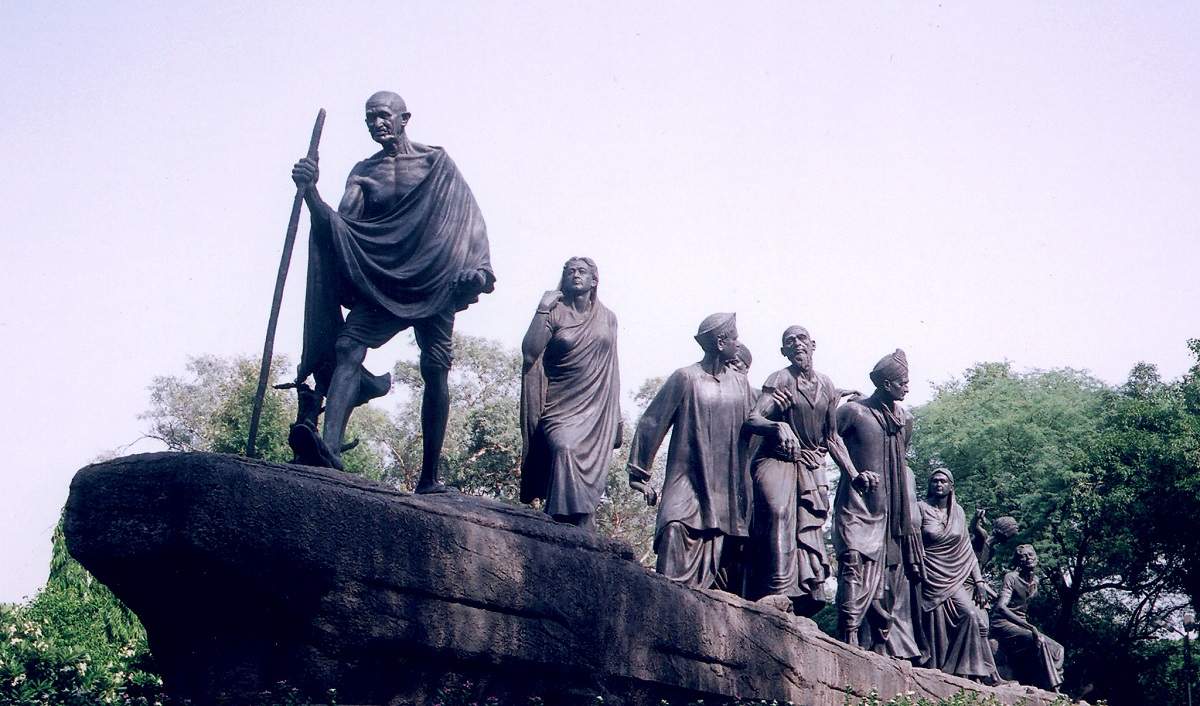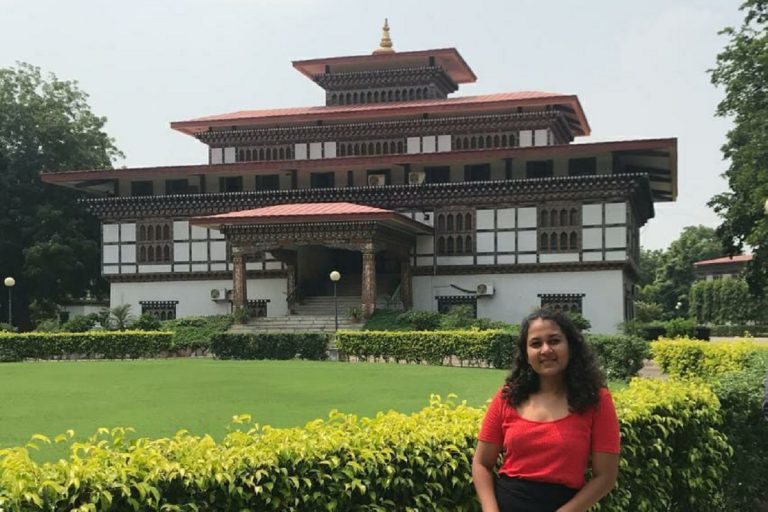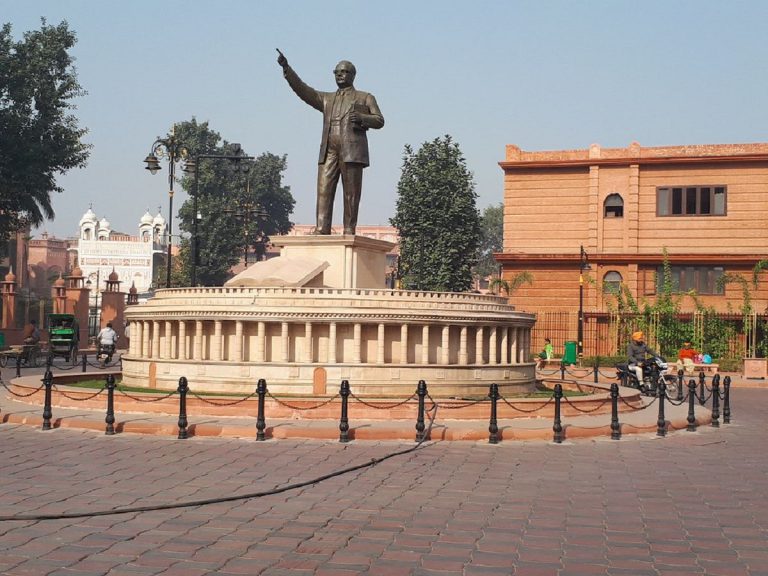The Dandi march & Gandhi as a political strategist

Anirban Chanda is a law student at Jindal Global Law School, Sonipat. He is interested in Constitutional Law and Political Theory.
“There are many who dismiss Gandhi as a professional politician who bungles at critical moments. In one sense, politics is a profession, and the politician is one trained to transact public business in an efficient manner. There is another sense in which politics is a vocation, and the politician is one who is conscious of a mission to save his people and inspire them with faith in God and love of humanity. Such a one may fail in the practical business of government, but succeed in filling his fellows with an invincible faith in their common cause. Gandhi is essentially a politician in the second sense. He has firm faith that we can build a world without poverty and unemployment, without wars and bloodshed, if only we get anchored in the world of spirit.” [1]
Dr. S. Radhakrishnan. Benares, 4th April 1945
Introduction
While it would be very difficult to summarise the entire political career of Indian’s greatest leader, one could perhaps begin by acknowledging the unique nature of Mahatma Gandhi’s political graph. In the time frame between the years 1919-1925, when Gandhi’s popularity and influence started increasing in Indian Nationalist politics, the Congress was seeing a change in power. The premature deaths of its senior leaders like Bal Gangadhar Tilak (1920) and C.R. Das (1925) transferred the new leaderships singularly to Gandhi’s shoulders. It would be right to say that such a transfer also marked a difference in the Congress’s approach in Gandhian times. Unlike the former Congress leaders such as Tilak, Motilal Nehru, and C.R. Das, who were Moderates and believed in Constitutional methods of negotiation with the British Government, the Gandhian approach was marked with the methods of Satyagraha (the Dandi March), Non-Cooperation and Civil Disobedience.
Gandhi’s political career was marked by its own high and low points, with periods of continental influence succeeded by times of quiet local work, particularly for socio-economic reforms on a small scale. [2] This Gandhian uniqueness of shrewdly manoeuvring and strategizing an occasional but well-timed and impactful political attack on the colonial state can be attributed to the Mahatma’s firm understanding of the psychology of Indian masses. [3] Gandhi understood that the Indian masses could not continue to keep up with a consistent mass struggle in the face with strong resistance from the state. The masses would become impoverished, both physically and mentally. They had to be given some time to rejuvenate their spirits. [4]
A person’s character can never be judged by one single incident. Similarly, a politician’s mind cannot be read by one single political event. As acknowledged in the beginning, it would be a clear impossibility to critically analyse Gandhi’s mind in totality throughout his political career. However, it may be possible to study a person by the nuances of their planning at critical junctures of life. This essay makes an attempt to critically analyse Gandhi as a political leader and strategist in the backdrop of one important episode in Indian Nationalist history: The Salt Satyagraha- Dandi march (1929). The immediate reason for selecting the Salt Satyagraha is twofold – first, that in the late 1920s, Gandhi was the sole leader leading the Congress (all the other senior Congressmen had passed away) and second, this was the second major movement to be led singularly by Gandhi after the Non-Cooperation – Khilafat movement in 1921.
Gandhi as a crusader of the Salt-Dandi march.
The Dandi march Satyagraha was indeed, very carefully planned and strategically carried out by Gandhi. This shrewd manoeuvre gives us an insight into Gandhi’s political genius. In December 1929, when the Congress declared Purna Swaraj as its objective, there was a lot of debate and discussion on what should be the form of protest that would be adopted. Sardar Patel had proposed a march to Delhi while Nehru and Bose had put forth the idea of a parallel government. [5] Gandhi understood that such ambitious plans would be very difficult to implement. The British Government would have, in most likelihood, pounced on the protestors and used force to resist the strategy. Therefore, the need of that hour was to devise a method that would have a strong symbolic impact and, at the same time, be easy enough to ensure active participation by the masses. [6]
A second concern for Gandhi was that the Indian masses were fractured along religious and caste lines. The challenge before him was to ensure that the movement does not remain limited to a certain section of the society. [7] The concerns regarding the oppressive Salt laws were something that had been voiced in the past as late as 1844 in Surat, where almost after a century, the Satyagraha march was to take place. It was also criticised in the inaugural session of the Congress in 1885 and subsequently by Dadabhoy Naoroji and Gokhale. In fact, Sir Surendranath Banerjee had also toured the Indian villages requesting people to boycott imported cloth from Manchester and salt from Liverpool. The point here is that the issue of salt laws was not something that Gandhi brought up for the first time; it was always an issue, amongst other things. [8] What is important is to notice how Gandhi used this existing issue and turned it into a massive movement using his charisma.
The symbolic relevance of ‘Salt’ as a commodity
Salt is one such commodity that is used equally by all individuals irrespective of their religion, caste, and class differences. The fact that it was used by all Indians as an ingredient in food items gave it an additional emotional advantage. It must have struck Gandhi that using this peculiar quality of salt can offer a symbolic platform where both Hindus and Muslims can come together and jointly protest. At the same time, the rich and poor people could also be brought on board. (Suchitra, 1995).
The movement provided an equal platform to the rich classes who wanted to display their sympathies for mass suffering and the poor for whom it was a symbol of exploitation. Thus, Gandhi made strong use of the moral and emotional appeal that Salt as a commodity offered.
Why was it important to have the march?
Gandhi could have broken the salt laws at any place. There was no immediate reason to have a march. However, upon critical analysis, one realises that Gandhi understood that merely breaking the salt law would not get thousands of people to rally around him. There was a need to make the entire protest have a dramatic appeal so that it gathers more and more people (which was necessary to ensure a tremendous impact and also guarantee wide publicity).
A second probable question would be why couldn’t Gandhi just take the train to a coastal town and perform a disobedience of salt laws? Here, one can infer that Gandhi understood the symbolic relevance the march would have coupled with the benediction of his charisma. Also, we must remember that in both western and Indian mythology, marches have always been associated with determination, righteousness, and sacrifice for a cause. For instance: The Bible describes Moses leading his people to the promised land and Jesus leading his followers to Jerusalem. This gave further legitimacy to using the act of a march as a mode of civil defiance. (Suchitra, 1995).
Why was Surat decided as the destination?
The idea of choosing Surat as the end destination for the Dandi march was given by Gandhi’s close associate Kalyanji Mehta. The first strong reason for this might have been the fact that Surat, at that time, had the highest number of Congress volunteers.[9] The second reason could be that given Surat’s distant location – the travel time would afford the news of the protest to spread all over the country. Here, it must also be stated that the time that was selected: the second week of April was also strategic. All newspapers would be printing a remembrance of the infamous Rowlatt Act and Jallianwala Bagh massacre (happened on 15th April), and people, having been reminded of the dark incident, would have a strong emotional reason to show support towards the movement and join it. [10]
Reflections on Gandhi’s plan
Gandhi, in addition to the above, must have also been convinced that by defying the salt laws, he would not be asking his supporters to take a great risk, which would peril their lives. There was no capital punishment for breaking salt laws. One would, at the maximum, be imprisoned, the chances of which were rare as the movement remained largely peaceful. This would encourage many people to join the movement.
It was important to ensure that the movement received wide newspaper coverage and publicity. The Dandi march provided ‘photo ops’ to the various vernacular newspapers such as Bombay Chronicle and Mumbai Samachar. Gandhi is also known to have taken complete charge of his daily newspapers: Young India and Navajivan, a few weeks before the Dandi march began. He must have understood that the movement could go terribly wrong if its aim and objective were misinterpreted by the media and other daily newspapers and, therefore, took it upon himself to ensure that the message of the protest is communicated loud and clear without any malicious distortions. In fact, Gandhi is said to have insisted that his letters and writings be published without the slightest alterations in such critical junctures of the mass movement. (Suchitra, 1995).
Women and religious minority groups like Muslims were never treated as a major force of mass national movements till then. For women, especially, Salt had a special symbolic importance. The famous Indian social reformer and freedom activist Kamaladevi Chattopadhyay, who was leading the protests in Bombay, had recorded in her book titled Indian Women’s Battle for Freedom: “…So far as women were concerned, it (Salt Satyagraha) was ideally tailor-made for them. As women naturally presided over culinary operations, salt is for them the most intimate and indispensable ingredient.” Mahatma Gandhi was aware of this, and he strategically planned the involvement of minority groups. It is said that Gandhi decided that of the total number of seventy-nine people who were marching along with him – Sarojini Naidu and Abbas Tyabji would replace him in the event he gets arrested at any point in the journey. This shows his vision of including Women and Muslims in the movement.
Gandhi also made intelligent use of religious symbols while appealing to the masses to join the Salt satyagraha movement. This was done by constantly referring to various mythological texts. Gandhi convinced the masses that salt laws were against the fundamental values of the Hindu religion, and therefore, for every Hindu, it was a religious duty to defy such oppressive laws. He declared that “It is my dharma to commit sedition against the Government. I am teaching this dharma to the people” [11]. However, the same techniques did not work for Muslims as writings in the Koran did not have anything which could encourage the idea of breaking salt laws. Thus, it largely remained a major ‘Hindu’ nationalist movement. This was worsened by a lack of support from the Ali brothers, who were disappointed by the failure of the Khilafat movement.
Gandhi knew very well that the imagery of Salt had to be used very creatively. While he understood that his own participation would be the principal attraction of the entire movement, he realised that this alone would not be able to sustain the massive impact the Dandi march was intended to produce. He was not swayed or blinded by his own popular image. He was well aware that if the people felt the slightest distrust in the leadership, they would condemn the whole movement. At the same time, he was also aware that people were not fools to accept anything told to them in the name of religion. (Suchitra, 1995).
The entire Dandi march was extremely well planned and carefully strategized than one usually understands it. It had implements of human psychology perfectly blended and applied with political expertise. The Salt Satyagraha was arguably one of the finest examples of Gandhi as a genius political strategist.
References
1. Prabhu R.K. & Rao, U.R. (1966) The Mind of Mahatma Gandhi (Published by J.T Desai Navajivan Mundralaya, Ahmedabad). This extract has been taken from the book’s foreword authored by Dr. S. Radhakrishnan. Please refer to page 3 at para 2.
2. Brown, J.M., Gandhi As Nationalist Leader, 1915-1948, Published by The Cambridge Companion to Gandhi. Please refer to page 53.
3. Gandhi, Gopalkrishna (2018). The Oxford India Gandhi: Essential Writings (Oxford India Collection), Oxford University Press.
4. Chandra Bipan, Mukherjee Mridula, Mukherjee Aditya, Mahajan Sucheta and Panikkar K.M., India’s Struggle for Independence. Published by Penguin books.
5. Suchitra (1995, April 8). What Moves Masses: Dandi March as Communication Strategy, Economic & Political Weekly, Vol. 30, Issue no. 14. Accessed on 22nd September 2020. Link:https://www.epw.in/journal/1995/14/perspectives/what-moves-masses-dandi-march-communication-strategy.html
6. Kuhn, Betsy (2011). The Force Born of Truth: Mohandas Gandhi and the Salt March, India, 1930. Published by Chicago: Twenty-First Century Books.
7. This was precisely what he tried to do during the Non-Cooperation & Khilafat Movement in 1921. We can constantly see him trying to think beyond religious divisions.
8. Serajuddin A. (1978). The Salt Monopoly of the East India Company’s Government in Bengal. Journal of the Economic and Social History of the Orient. Vol. 31, Issue no. 03. Pages 304-322. Accessed on 22nd September 2020. Link: https://www.jstor.org/stable/3632201
9. Howard Spodek. (1971). On the Origins of Gandhi’s Political Methodology: The Heritage of Kathiawad and Gujarat. The Journal of Asian Studies. Vol. 30, Issue no. 02. Pages 361 – 372 Accessed on 22nd September 2020. Link:https://www.cambridge.org/core/journals/journal-of-asian-studies/article/on-the-origins-of-gandhis-political-methodology-the-heritage-of-kathiawad-and-gujarat/928E4882EF919C39B699A3F358A28906#
10. Weber, Thomas: On the Salt March – Gandhi’s Epic March to Dandi Remembered’ (manuscript), Gujarat Vidyapith Library, Ahmedabad cited in Suchitra, What Moves Masses: Dandi March as Communication Strategy.
11. The Bombay Chronicle, 20 March 1930. Please see ‘Dandi March’ at mkgandhi.org. (Bombay Sarvodaya Mandal & Gandhi Research Foundation). Accessed on 22nd September 2020. Link: https://www.mkgandhi.org/civil_dis/dandi_march.htm.
Featured Image Credits: Flickr








